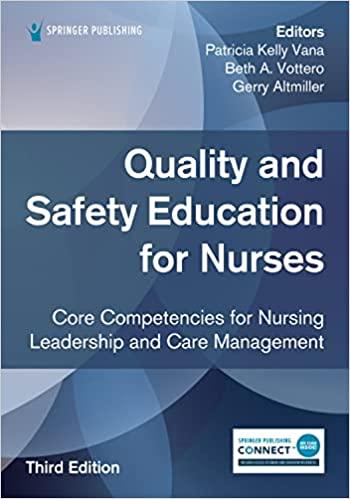Mrs. Smith is an 85-year-old female who is admitted with an exacerbation of congestive heart failure. Mrs.
Question:
Mrs. Smith is an 85-year-old female who is admitted with an exacerbation of congestive heart failure. Mrs. Smith has a history of hypertension and diabetes mellitus type 2. In the emergency department (ED), she had difficulty breathing with crackles noted in all lung fields, an oxygen saturation of 91%, and multifocal premature ventricular contractions on her electrocardiogram. The ED physician ordered high doses of furosemide intravenously, an indwelling urinary catheter was placed, and supplemental oxygen via nasal cannula was applied. Within 24 hours, Mrs. Smith diuresed significantly and her physical examination revealed an 8-pound weight loss, crackles only in the bases of her lungs, nonlabored respirations, an oxygen saturation at 94%, and normal sinus rhythm on her electrocardiogram. She was alert and oriented and willing to participate in her care. The new-to-practice nurse is concerned and speaks to a senior nurse about needing to request an order from the physician team to remove Mrs. Smith’s indwelling urinary catheter. The senior nurse replies, “I wouldn’t do that until her furosemide is stopped. Otherwise, you’ll need to be constantly putting her on the bedpan.”
1.
How can the new-to-practice nurse best advocate for the patient in this situation?
2.
What part of the EBP bundle needs to be implemented?
3.
How can the new-to-practice nurse address concerns like this that are not in the patient’s best interest and do not align with best practices? What resources could be used?
Step by Step Answer:

Quality And Safety Education For Nurses Core Competencies For Nursing Leadership And Care Management
ISBN: 9780826161444
3rd Edition
Authors: Patricia Kelly Vana, Beth A. Vottero, Gerry Altmiller






